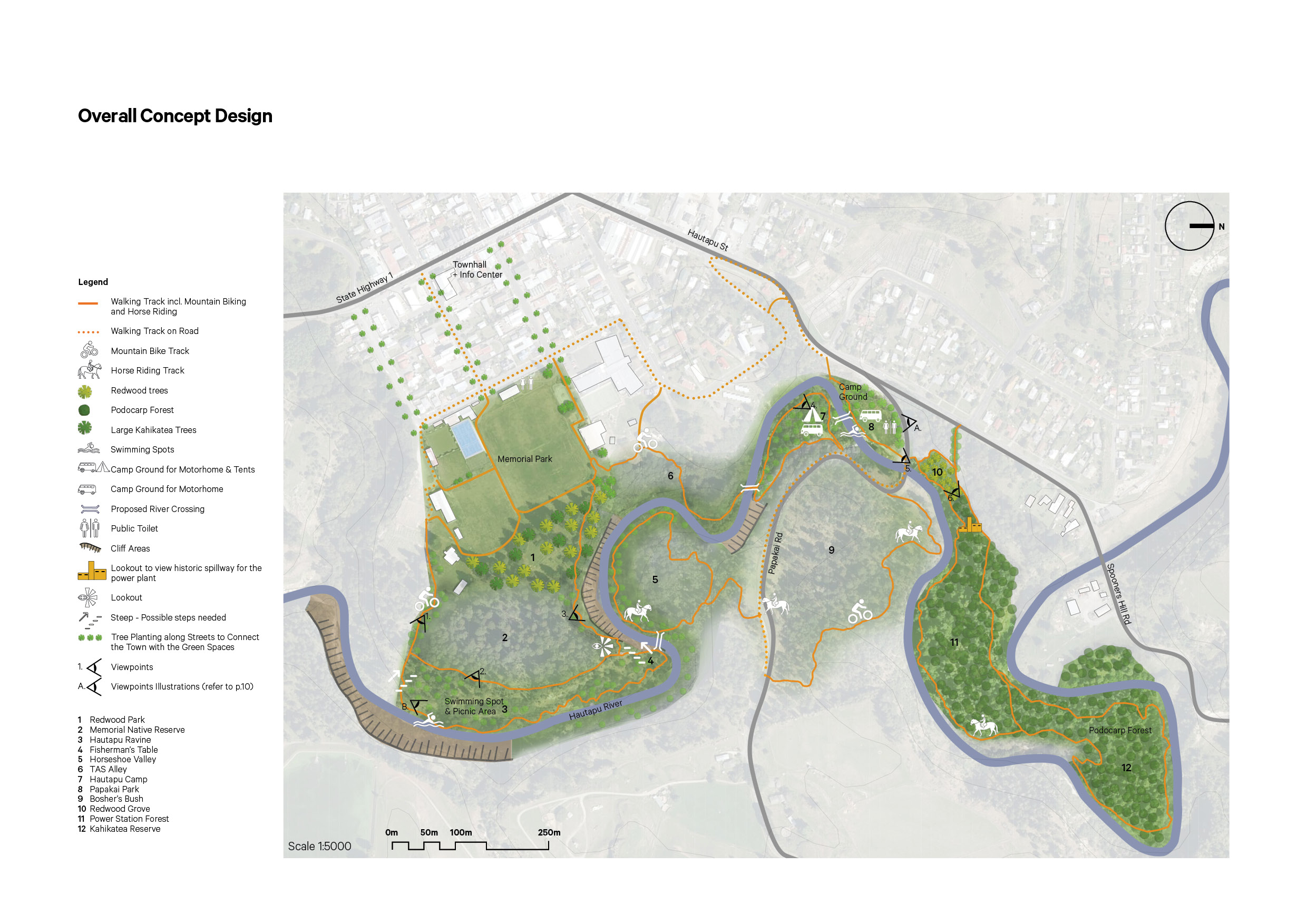Taihape works to shake off its 'gumboot' image
Taihape - the gumboot capital of the world! At least that’s what the publicity has screamed for the last thirty-odd years. But now locals and the Rangitikei District Council want everyone to know there’s a lot more to tempt tourists off State Highway 1 and into the rural settlement than an affinity with rubber boots.
“There’s the magnificent environment,” says Athol Sanson, Rangitikei District Council’s Parks and Reserves team leader. “We have 500-600 year old Kahikatea trees just a few hundred metres from the town centre. A clean river to swim in and picnic by. And we’ll soon have walking, riding and biking tracks for everyone. We want people to know they can get out of our great cafes and go for walks in our beautiful natural environment.”
The Rangitikei District Council wants Taihape locals and visitors to know about the area’s natural environment.
With a population of just over 1,700, Taihape sits in the middle of the North Island. It’s characterised by vast amounts of forests consisting of mature Kahikatea, Matai, Totara and Kowhai trees.
To make the most of its surroundings the council employed Isthmus in Wellington to draw up a concept plan for Papakai and Memorial Parks. The parks adjoin each other but are separated by the Hautapu River. Isthmus has come up with a plan that has four bridges linking them. “My favourite part of this project will be the bridges,” Sanson says. “They mean visitors and locals can take walks of more than a couple of kilometres into areas they probably never knew existed. This plan will really open up areas that aren’t accessible at the moment.”
Historically the reserves had tracks and picnic areas and were once a popular place for the locals to take their families for swimming and recreation. Many of the original features such as BBQs and tracks are still present but are in very poor condition and the parks are now difficult to access.
Landscape architect Frank Hoffmann, who worked on the project for Isthmus, says Taihape has a unique natural setting and rich cultural history. Next to its forest areas and cliffs, water plays a significant role, he says. “Water symbolises the source of life and can be seen as an element of motion, transformation and renewal. The “Hautapu River Parks” can be used as the overall guiding theme to connect Taihapes natural features and strengthen its prominence.”
Forests, water and the region;s cliffs will play a key role in the plans for the region’s future.
Hoffmann says before any concept drawings were made there was lots of collaboration with the local community group, Society of Friends of Taihape, local councils and the Taihape Rotary Club. The resulting plan includes campgrounds, a network of tracks for different users, river access and points of interest such as the old power plant and the Hautapu Ravine. A lot of the work, especially building the tracks, will be done by the Society of Friends of Taihape (SOFOT), a community group that both Hoffmann and Sanson say deserves a lot of credit for its commitment to strengthening the town’s status as a destination.
SOFOT has already restored a local reserve known as Mt Stewart, forming tracks, eradicating weeds, planting and building a lookout. The group will start working on the tracks for Hautapu River Parks over the summer.
Taihape has 500-600 year old Kahikatea trees just a few hundred metres from the town centre.
“We’re really fortunate to have such an active community group,” says Sanson. “They have all the gear that’s needed and do the physical work. We’re only a small council and if we didn’t have community involvement on these projects they wouldn’t get done.”
“I think with the community involvement we can get people to understand that Taihape is not just a town along the state highway,” says Hoffmann. “But it’s a destination, a place that has really great facilities that tourists can use and stay overnight.”
The area has an active community group keen to show off Taihape as a destination - not just a town along the main highway.




